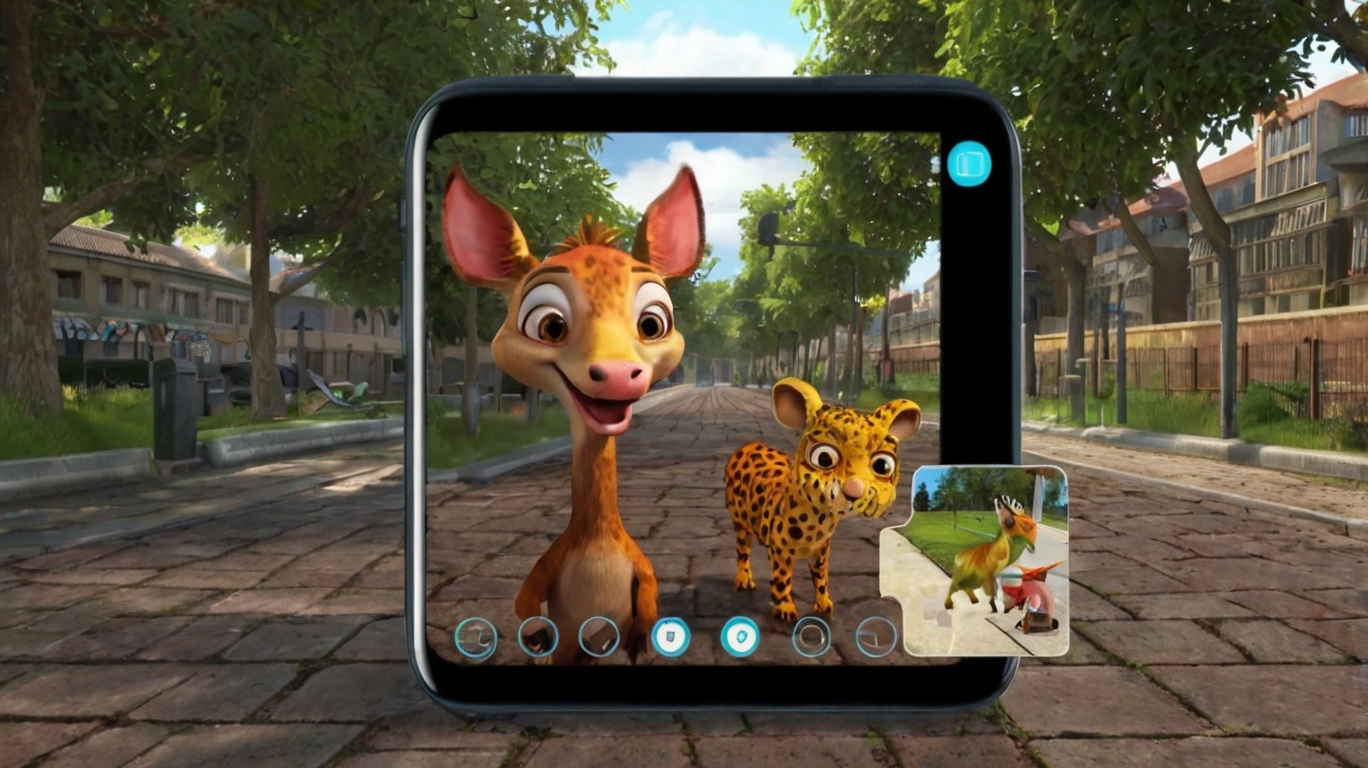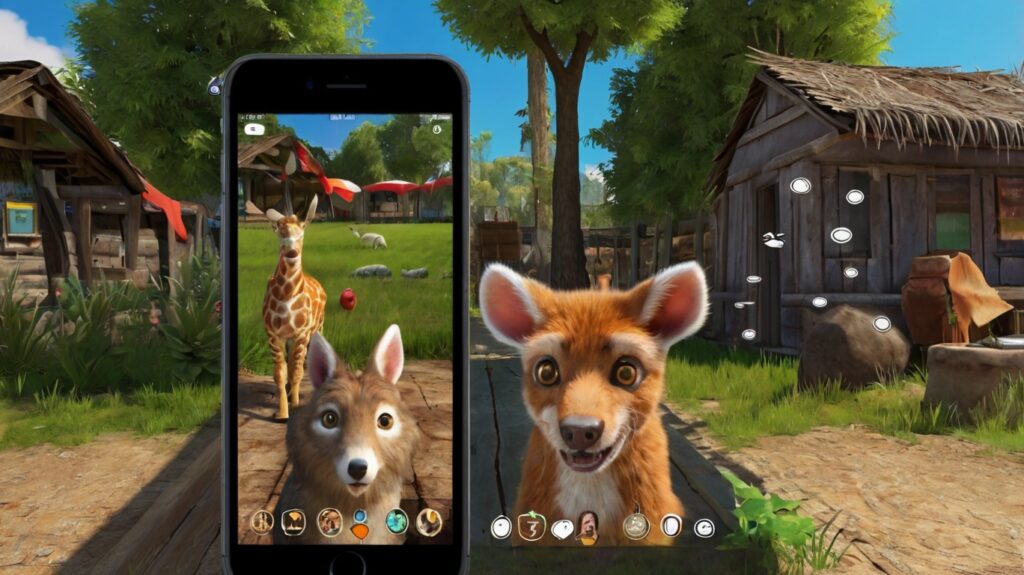
Since augmented reality (AR) allows the digital and physical worlds to collide, it has the potential to create previously unthinkable immersive experiences. In this article, we will examine how AR is changing mobile gaming and what it means for developers and players. At Melior Games, we are constantly searching for innovative technologies that can completely change the gaming experience for our players.
The Evolution of Augmented Reality
Since its inception as a futuristic idea in science fiction, augmented reality has evolved significantly. Thanks to developments in software and smartphone technology, augmented reality is now more widely available than ever. Modern mobile devices are well-suited to meet the demands of augmented reality apps because to their potent processors, sharp displays, and advanced sensors.
AR in Mobile Games: A Game Changer
Enhanced Immersion
AR games allow players to see and interact with game characters, objects, and environments as if they were part of their immediate environment by superimposing digital aspects over the real world.
Social Interaction
Through their ability to bring players together in real life, augmented reality games usually encourage social involvement. This social element enhances gaming and fosters a sense of connection among users.
Innovative Gameplay
AR opens up new possibilities for imaginative gaming effects. Because augmented reality games let users engage with the real world, they are different from standard smartphone games. For instance, players might have to explore the area to locate hidden goodies. They might even have to fight in the room or backyard or solve problems using actual objects. This extra degree of engagement might improve how lively and thrilling games are.
Real-World Integration
Real-world data integration is an interesting new feature of augmented reality in mobile gaming. To generate distinctive and contextually relevant experiences, games might make advantage of information about the player’s location, surroundings, and even the time of day. A game might, for instance, alter its obstacles according to the player’s current weather or incorporate local landmarks into the gameplay.

Challenges and Opportunities
Although AR has the potential to completely transform mobile gaming, it also presents a special set of difficulties that app developers must solve to provide seamless and entertaining experiences. These are a few of the main obstacles to the creation and application of augmented reality in mobile gaming.
1. Technical Limitations
Hardware Requirements: Not every mobile device can run augmented reality apps well. For AR games to function properly, they frequently need sophisticated sensors, high-definition cameras, and potent processors. For developers, guaranteeing compatibility with a large number of devices can be a difficult undertaking.
Battery Consumption: AR applications are notorious for their high energy consumption. Running graphics-intensive applications that rely on continuous camera use, GPS, and data processing can quickly drain the battery, which can detract from the user experience.
2. User Experience Design
Usability: It’s critical to provide user-friendly and intuitive interfaces for augmented reality games. Interaction between the virtual and physical worlds must be fluid for players. Ineffective usability can cause annoyance and disinterest.
Environmental Factors: The physical surroundings of the user has a major influence on AR experiences. Inadequate illumination, congested areas, or reflecting surfaces might impede the functionality of augmented reality applications, resulting in less than ideal experiences.
3. Development Complexity
Real-Time Performance: AR games require real-time processing to ensure that virtual elements are correctly aligned with the real world. Achieving this level of performance without lag or glitches demands sophisticated programming and optimization techniques.
Cross-Platform Development: Creating AR games that function flawlessly on several platforms (Android, iOS, etc.) involves additional complexity. Because every platform has different libraries, tools, and performance requirements, developers must invest more time and energy in creating applications for each platform.
4. Data and Privacy Concerns
Data Usage: To broadcast real-time data and changes, augmented reality applications frequently need a continuous data connection. This can be difficult in places with bad internet, and it can cost gamers a lot of money in terms of data usage.
Privacy Issues: Users’ privacy is at risk since augmented reality games frequently require access to the camera, location, and other private information. Retaining player trust depends on making sure data is handled ethically and openly.
5. Safety and Accessibility
Physical Safety: Players may be hurt or have accidents if they are encouraged to move around while concentrating on their screens. It is imperative for developers to devise strategies that guarantee safe gameplay, complete with relevant cautions and protective measures.
Accessibility: All players, including those with disabilities, should be able to participate in inclusive and accessible AR games. It might be difficult to design for a wide range of skills, but doing so is necessary to create experiences that are really inclusive.
6. Content Creation
Quality of AR Content: It takes a lot of design and development work to produce realistic, high-quality AR content. It’s difficult to make virtual objects seem and act realistically in the actual world.
Content Updates: Frequently, AR games require upgrades to maintain interesting and engaging information. A strong pipeline for the production and distribution of content is necessary for this continuous development, which might be resource-intensive.
7. Market Adoption
User Education: AR is still a relatively new technology for many users. Educating players on how to use AR features and highlighting the benefits can be a challenge, especially when targeting a broad audience.
Market Readiness: The state of the market is another factor that affects AR game success. Although there is a growing interest in augmented reality (AR), broad adoption takes time, so developers must be tenacious and patient in their pursuit of market share.
These obstacles are not insurmountable, though, and there are large possible benefits. We may anticipate seeing ever more complex and captivating augmented reality games that push the envelope as technology in this field develops.
Conclusion
Not merely a catchphrase, augmented reality is a game-changing technology that is changing the way that mobile games are played. AR is opening up new opportunities for both gamers and game creators by fostering social engagement, improving immersion, facilitating creative gaming, and incorporating real-world data.




